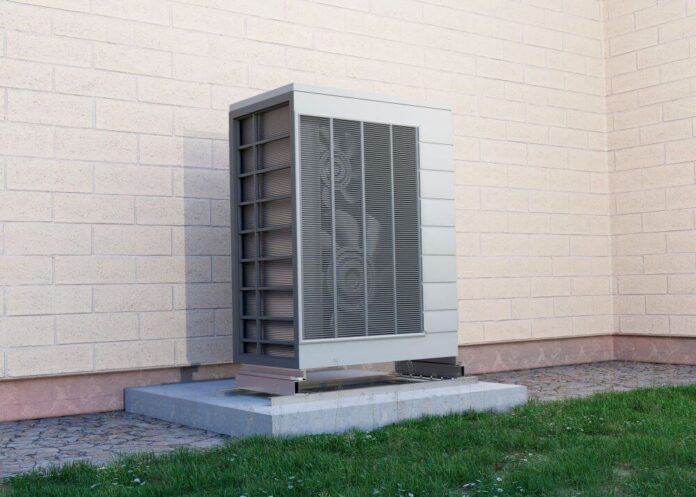Swapping out a clunky old boiler for a sleek new heating system might sound simple — but in older buildings, it’s rarely that straightforward. Whether you’re overseeing a Victorian office block, a pre-war shopfront or a listed heritage site, the chances are high that it wasn’t built with modern heating tech in mind.
Still, with energy costs on the rise, ever-tighter regulations, and the UK charging toward its net-zero targets, a Commercial Heat Pump is fast becoming a serious contender. The tricky bit? Getting it to work in buildings that weren’t exactly designed with efficiency in mind.
If you’re weighing up a retrofit, there’s a lot to think about — from patchy insulation and awkward layouts to planning restrictions and system mismatches. This guide walks you through the major hurdles, offers practical workarounds, and highlights real-life case studies to help you figure out whether a heat pump is the right move for your building.
Why Consider Heat Pumps for Older Buildings?
Unlike boilers that burn fuel to create heat, heat pumps simply move it — pulling warmth from the air or ground and shifting it indoors. That makes them incredibly efficient, especially when compared to traditional gas or oil systems.
It’s an appealing prospect for older buildings — but there’s a catch. Heat pumps are at their best in well-insulated spaces. A draughty Edwardian townhouse or a solid-brick Victorian warehouse might need a bit of TLC to get the full benefit of a modern system.
That said, with the right prep, many older buildings can be brought up to scratch. It’s rarely a plug-and-play solution, but it is possible.
Common Challenges (and How to Tackle Them)
1. Insulation and Heat Loss
Let’s start with the big one: older buildings tend to leak heat — and fast. Unlike boilers, which blast out short bursts of high heat, heat pumps work steadily at lower temperatures. So if you’ve got gaps, rattly windows or chilly walls, that lovely heat won’t stick around.
Before you install anything, check:
- Wall construction: Solid brick or stone? You’ll likely need to look into internal or external insulation.
- Windows: Single glazing? Even secondary glazing or some clever draught-proofing can make a world of difference.
- Air gaps: Around windows, doors and floorboards — seal them up wherever you can.
Listed or in a conservation area? You might be limited in what you can do, but hybrid setups (heat pump + boiler) offer more flexibility in tricky cases.
2. Space Constraints
Heat pumps aren’t exactly pocket-sized, and space can be tight.
- Air Source Heat Pumps (ASHPs) need outdoor units — not ideal in built-up areas.
- Ground Source Heat Pumps (GSHPs) require trenches or boreholes, which can be a non-starter in some locations.
Potential workarounds:
- Compact ASHP units can be rooftop-mounted or tucked into out-of-the-way courtyards.
- Shared ground loop systems are a solid option for campuses or estates with multiple buildings.
3. Noise and Visual Impact
While far quieter than old-school boilers, heat pumps aren’t silent. Outdoor units, particularly ASHPs, do hum — and that can raise concerns in urban areas.
Key considerations:
- Local authorities often set strict noise limits. Check before you commit.
- In heritage properties, appearance matters. Consider acoustic enclosures or clever placement to keep things discreet.
4. Compatibility with Existing Systems
One of the biggest misconceptions? That you can simply slot a heat pump into an old setup and expect instant results.
Older systems are typically built for high-temperature heat from gas or oil — whereas heat pumps run cooler. Without adjustments, performance can take a hit.
Options to improve performance:
- Upgrade to larger, low-temperature radiators.
- Add underfloor heating (great with heat pumps, but not cheap to retrofit).
- Install a hybrid system with a boiler for backup during the coldest months.
Real-World Examples
Sutton Dwellings, Chelsea
This Edwardian social housing block had 27 boreholes drilled for a GSHP system. Compact units were installed in each flat — cutting energy bills and slashing emissions.
Source: The Guardian
Greenhouse, Leeds
An old industrial building transformed into a sustainable residential complex. It now uses ground source heating and solar panels, with energy use cut by over 40%.
Source: Financial Times
Budgeting and Financial Support
Upfront Costs vs. Long-Term Savings
There’s no sugar-coating it — installing a commercial heat pump isn’t cheap. ASHP systems can set you back £15,000 to £30,000, with GSHPs often costing more. But the long-term savings can be substantial.
Take one 1960s office block fitted with an ASHP — heating bills dropped by nearly a third in just two years.
Source: The Times
Funding Support
The government offers several schemes to ease the financial load:
- Boiler Upgrade Scheme (BUS) — Grants of up to £7,500.
- Salix Energy Efficiency Loan Scheme — Interest-free loans for public sector buildings.
Used wisely, these can significantly reduce your upfront spend.
Planning Permission and Regulations
If your building is listed or in a conservation area, planning permission is almost certainly required. Even in non-listed buildings, you might still need approval — especially if the installation affects visual appearance or exceeds local noise thresholds.
Source: Gov.uk
Tips for Getting It Right
- Start with an energy audit — Identify problem areas before committing.
- Bring in the experts — Retrofitting older buildings is a specialist job. Choose contractors who’ve done it before.
- Phase the work — A hybrid setup can help you ease into the switch if a full install isn’t viable straight away.
- Keep an eye on performance — Use smart controls and data tracking to tweak and optimise after installation.
Final Thoughts
Retrofitting a heat pump into an older building isn’t something you knock out over a weekend — but with proper planning and the right support, it’s absolutely doable. The rewards? Lower energy bills, a lighter carbon footprint, and a future-proofed building ready for tomorrow’s standards. For facility managers facing the long-term, it’s a smart, strategic step forward.







